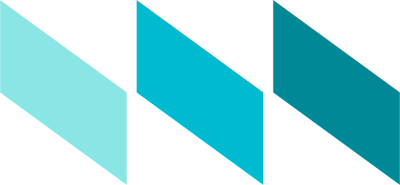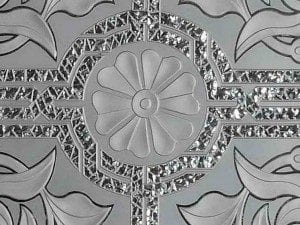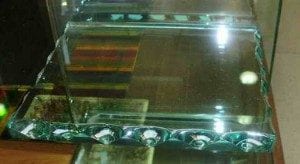
Tempered glass is glass that has been processed by controlled thermal or chemical treatments to increase its strength compared with normal glass. Tempered glass is made by processes which create balanced internal stresses which give the glass strength.
It also makes it safer because when broken it yields small pebble-like fragments.
The beveling widths can range from 1 mm to 50 mm
The standard sheet size for both glass and mirrors is 3.21 x 2.25 meters. Anything above this is considered jumbo size and is subject to availability. N.B: Patterned glass comes in smaller sizes than the standard sheet size.

The above design includes sandblasting, engraving and hammering.

The above type of hammering is used as one of the many forms of beveling.
Float glass gives off a greenish tint effect
Crystal glass gives off a pure transparent effect
The maximum thickness for reflective glass items is 8mm
The tinted colors available for mirrors and glass are:
All our glass raw material is imported from Europe (Belgium-Germany-France) and China.
The maximum dimensions for LCF film is: 300cm x 150cm
No it cannot be totally frameless since an electrical busbar should pass around at least 2 parallel sides.
Therefore, a frame must exist on at least 2 parallel sides.
Acid etched glass is achieved by dipping glass into actual acid. This results in a very smooth etching effect.
Since acid is considered a hazardous material, its use is banned in several areas. Due to this, Acid Etched glass is usually processed in specific factories and then sent to glass processors as fully etched sheets of glass.
Accordingly the disadvantage of acid etched glass is that the etching design cannot be customized.
In contrast sandblasted glass can be fully customized according to the required design.
Although the etching will be slightly less smooth than the acid, the sandblasted part can then be coated to protect from any fingerprints or marking.
Yes. Every sandblasted item is sprayed with the “Clear Shield” which provides a non-sticky surface treatment for glass forming a barrier between the glass and its environment, thus minimizing fingerprinting, staining and discolouration as well as contamination by dirt and pollutants.
This non-stick glass surface treatment stays completely transparent and is environmentally-friendly, non-toxic and resistant to high temperatures and ultra-violet rays.
The available thicknesses of tinted glass items are: 6mm, 8mm,10mm
The maximum thickness of colored glass items (stained) is: 3.5 mm
It depends on the glass thickness.
However, the maximum curve that we could obtain is a semi-circle.
Yes. The colors can be chosen from our vast options in the RAL Chart.
The original color for the fiber or straw is off-white.
However, they can be painted in any color the clients requests ( using the color range in the RAL Chart)
All fabrics are suitable.
However, the fabric should not be very embossed and the percentage of polyester should not be high.
Yes. However, it is preferable not to use 4mm +4mm glass thicknesses in order to avoid breakage.
Moreover, the thickness also depends on the dimensions and on its usage.
No. Mirrors cannot be hammered since the minimum thickness for hammering should be 12mm.
The thickness for mirrors is: 4mm, 6mm, 8mm